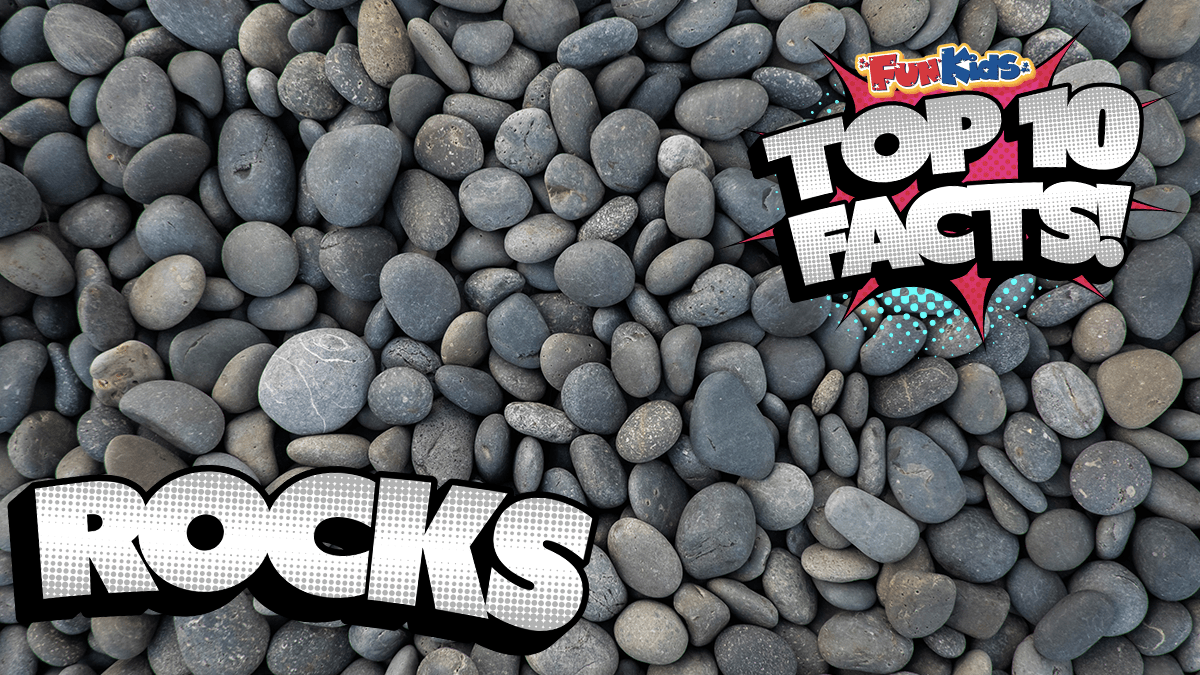
Rocks can be found everywhere, in gardens, parking lots, fields, or anywhere else we don’t want plants, pavement, or bare dirt. They are so common, in fact, that most of us don’t even notice them in our day-to-day lives. It’s easy to ignore rocks until one gets in the way, or falls on your car.
The thing is, though, that rocks are actually pretty important. Never minding that we wouldn’t have a planet to stand on without rocks, the modern world we live in would be impossible without rocks. You see, rocks are made up of minerals, and minerals are essential for the technology that we use every day. Not only that, but rocks are really interesting. So set aside all the boring stuff you learned in junior high school, here are 10 amazing rock and mineral facts your teacher left out.
A Diamond Is Exponentially Harder Than A Sapphire
Diamonds are technically minerals, so their hardness is measured on the Mohs Hardness Scale[1]. This is one of the primary tools we use to help identify minerals. If an unknown mineral can scratch a known mineral, then we know it is harder than the known mineral. On the other hand, if the mystery mineral is scratched by a known mineral, we know it is softer than the known sample. By comparing the scratch-ability of the mystery sample to the ones we know, we can narrow down the possible identities of the mineral in question. There are ten minerals that we use as reference points along the scale. The top two are sapphire at nine and diamond at ten. But the numbers are a bit misleading. The scale is exponential, and takes a huge leap up between sapphire and diamond.
One of the easier ways to think about this is with percents. On the scale, calcite is a three and fluorite is a four. But there’s not a straight line between them. Fluorite is 25% harder than calcite. You can scratch calcite with a copper penny, but not fluorite. The fluorite will leave a scratch on the penny. The difference between sapphire and diamond is even bigger. Diamond is 300% harder than sapphire. Diamond may not be the absolute hardest stuff on earth, but it’s still a whole lot harder than other minerals.
The Color You See in a Mineral Is Not Really the True Color of the Mineral
Another important mineral identification tool is called streak. You have a small piece of unglazed porcelain tile, and rub the mystery mineral across it. The powder left on the tile is the mineral’s streak. This tells you the true color of the mineral. So say you have a piece of sapphire that looks deep blue. Now rub it on your streak tile and what are you left with? Here’s a hint, it’s not blue. The streak of sapphire is white[2]. Color can be very deceptive. What you see when you look at a crystal like sapphire is the interaction between the structure of the crystal and the light passing through it and bouncing off it. If you’re looking at a crystal the size of a pea, you’re really looking at the tightly packed aluminum and oxygen atoms that form the crystal. But when you streak a mineral, the powder you see represents less of the structure and you can get a good look at the true color of the mineral. So where does the color come from?
The Colors of Gemstones Are Made at the Atomic Level
Color is caused by different wavelengths of light bouncing off an object. A blue sapphire is reflecting only blue light, a green emerald is reflecting only green light, and so on. In translucent minerals, like gems, the light passes through the crystal and reflects certain colors back.
That crystal structure I mentioned before is really a lattice of atoms bonded together. Take diamond as an example[3]. Its crystal lattice takes on a cubic structure as the carbon atoms bind to each other. Now, nothing in nature is really ever perfect, and those imperfections are what allow some wavelengths of light to bounce back where we can see them.
There are three common ways to alter the structure of the crystal and give it color[4]. First, you can add atoms. These are usually called impurities, but are really essential to the gemstones we know. For example, emerald is a variety of the mineral beryl that has impurities of chromium. The chemical properties of the chromium atoms allow green light to be reflected.
Second, adjacent atoms can swap electrons. The color is related to the amount of energy needed to move the electrons from one atom to the other. Aquamarine, the blue variety of beryl is an example of color from electron swapping.
Finally, you can break atoms apart. Applying radiation to otherwise boring gems to produce colors is fairly common, but it also happens in nature. A good example of this is zircon. A radioactive particle passes through the zircon’s crystal lattice and hits an atom along the way. That atom gets a proton or two knocked out of it and it becomes a different element. That new element then swaps electrons with it’s neighbors and creates color.
Diamonds Are Not the Rarest Gemstone
If we look at the geological processes that allow different gems to form, diamonds are actually really common. Yes, even gem quality diamonds are a lot more common than even emeralds. So why are diamonds more expensive than emeralds? While the conditions and processes needed to make emeralds in nature are rare, they are fairly easy to replicate in a laboratory setting. It’s a lot easier to find lab-created emeralds in a jewelry store than their natural counterparts. On the other hand, the conditions needed to make gem-quality diamonds are very difficult to replicate in a lab. While they are becoming more common, and are often marketed as being cheaper, the prices of natural diamonds varies so widely that you could find a natural diamond for less than a lab-grown stone[5][6].
So why is there this perception that diamonds are so rare and valuable? You may be thinking, “well, they are the hardest stuff on earth”. Even so, you can break a diamond. They have one perfect cleavage plane, so if you whack it just right on something, it can break along that plane. Diamonds are really hard, not invincible. One of the main reasons they are so expensive, and believed to be so valuable, comes down to brilliant marketing. The familiar slogan, “A Diamond is Forever”, was coined by DeBeers way back in 1947[7]. That combined with a tight control of the world supply of diamonds creates a value far higher than one would think based only on how common they are in nature.
Ice Is A Mineral
Ok, no, not the ice you get out of your freezer. Let’s look at the technical definition of a mineral. First, rocks and minerals are not the same thing. Rocks are made up of minerals. Minerals are the building blocks, the ingredients of rocks. In order for something to be a mineral, it needs to be formed in nature, and an inorganic homogeneous solid with a specific chemical make up and crystalline atomic structure[8]. Can ice fit that description? Definitely! Think about an iceberg, it was definitely formed naturally, and is certainly solid. The chemical composition of ice is H2O, the same as water. Water and ice are both inorganic substances, and ice is the crystalline form of water. Homogeneous can be a bit sketchy, as icebergs can have rocks and dust frozen inside them, but most of the ‘berg is just ice, so we let that slide.
Minerals Have Families, Too
Generally, any given mineral can be classified into a family by its chemical make-up, based on the part of the composition that is common to a lot of minerals. There are about eight families[9]. The native elements are minerals that are made up of only one element’s atoms. Examples are sulfur, copper, and diamond. The silicate family all have silicon and oxygen in their structures, and include quartz, beryl, and mica. The halides have elements from the halogen column of the Periodic Table (chlorine, fluorine, etc). Chances are good that you use a halide mineral at least once a day. Table salt is the mineral halite, or sodium chloride. Sulfide minerals have sulfur in them, but no oxygen. If you’ve heard of fool’s gold, you know iron sulfide. Sulfates have sulfur and oxygen. If you have drywall in your house, you have gypsum in your walls…a sulfide mineral. Oxide minerals pair metal atoms with oxygen, and can be either boring or beautiful. Sapphire is an oxide. Carbonates are very common, and the most well known is calcite. These minerals have carbon and oxygen in their structures. Then there are the phosphates. These minerals are quite a bit rarer than the others, but still give us some beautiful minerals. My favorite is apatite. There are a few other, smaller families that I will leave out. Have fun looking for them and seeing what they have to offer.
The mineral, gypsum, a sulfate
Some Rocks Expand When They Get Wet
The most common expanding rocks are called either shrink/swell clay or expansive soil[10]. These are rocks made out of clay particles, but they are not very tightly compacted. When water seeps into the spaces between the clay pieces, it causes the whole rock to swell. This can be very dramatic, and can even damage building foundations. It is obvious enough that you can feel it expand when you put a piece of it on your tongue!
Less common, but more dramatic are the trovant stones in Romania. These are crusted sandstone concretions that seem to grow when they get wet[11]. This seems to be a case of the water forcing the soft sandstone out from the crusty outer layer. Apparently this growth only happens after rain storms, so I doubt anything would happen if you touched your tongue to a trovant.
Here is a group of trovants
Your Tongue Can Be A Valid Identifying Tool
There are some minerals that look so similar and have pretty much exactly the same physical properties, that you are left with only one way to figure out what you have. That is to taste it. The two that are the worst for this are halite and sylvite[12][13]. Halite is table salt, so you’d know it as soon as you touched your tongue to it, but sylvite has a slightly bitter taste to it. If you’ve ever known someone that had to use a salt substitute, you’ve heard of sylvite. Halite has sodium, which is supposedly bad for heart patients, but sylvite has potassium. It still tastes salty, but you can tell them apart.
The other case where the tongue is useful is with shrink/swell clay. Once you get to rocks with particles as small as clay, it can be really hard to tell when you’re looking at. Feeling the expansion on your tongue can help you decide exactly which rock you are examining. But you have to be careful about that because…
Color-zoned halite
Some Rocks Might Make You Sick If You Taste Them
People who are curious enough about rocks to taste them have three main concerns with the practice. The first, and probably easiest to avoid, is radioactive rocks. You can handle one, briefly, depending on how strong it is, but getting any of it in your mouth or nose is a very bad idea. The best way to avoid this is to have the best idea possible of the rocks you are wandering around. The more you know about the area, the better.
The next concern is arsenic. One of the mineral families I left out was the arsenates. Even Lewis and Clark figured out that you really need to be careful about sniffing or tasting rocks[14]. It is ok to sniff rocks, that can tell you quite a bit about them, but make sure you don’t beat them into a powder first. Captain Lewis missed that memo and, not only tasted, but sniffed a mystery rock that he had crushed into a powder. His reward was illness. I hope at least one of those guys did a facepalm over it.
The last major concern, depending on where you are, is hantavirus. If you are going to try tasting a rock or mineral, make sure you break it open to find a fresh surface. You want to lick a rock that rodents have not had a chance to pee or poo on, ideally.
Of course, you might not want to taste a rock simply because of what it is made up of…
Credit: By Creator:Edgar Samuel Paxson (Personal photograph taken at Montana State Capitol) [Public domain], via Wikimedia Commons
Some Rocks Have Fossil Worm Poo In Them
This falls into the category of trace fossils, evidence of a critter’s behavior. Fossilized feces are called coprolites[15]. Any rock that has evidence of tracks and burrows and such is likely to also contain the leavings of the critters that made said tracks and burrows. You’re not likely to get sick from coprolites, and they don’t stink, but still…. Unfortunately, some expansive clay rocks also have tracks and burrows in them, so taste wisely.
We’ve really only scratched the surface of just how fun and fascinating rocks and minerals are. I hope I’ve been able to spark your curiosity to go out and look at the rocks all around you with a little more than a passing glance. Rock on!




